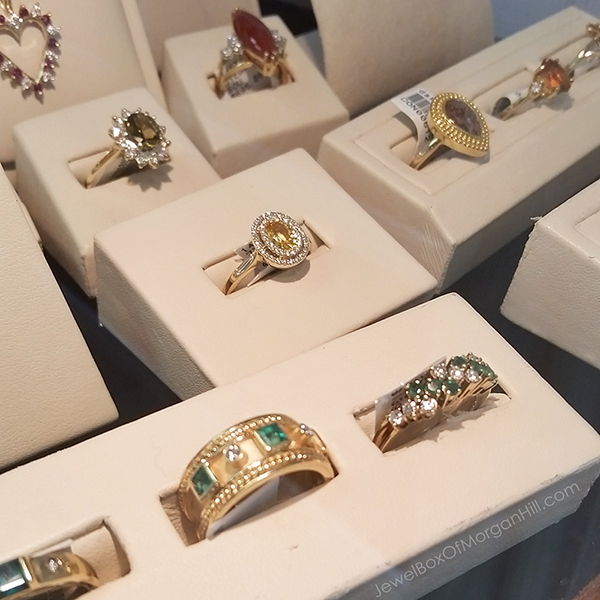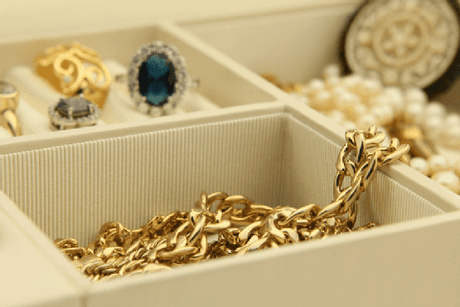A Comprehensive Overview to Consignment Jewelry and Its Lots Of Advantages
Consignment jewelry supplies an unique intersection of chance and value for both sellers and buyers, making it a notable factor to consider in the jewelry market. As the landscape of customer preferences moves towards sustainability, the benefits of consignment precious jewelry become increasingly relevant.
What Is Consignment Precious Jewelry?
Consignment fashion jewelry refers to items that are offered on behalf of their owners by a third-party retailer or supplier. This setup permits people to earn a make money from their fashion jewelry without the need to directly market or market it themselves. In this model, the owner preserves possession of the piece up until it is marketed, which sets apart consignment from straight-out sales where possession is moved immediately.
Commonly, consignment fashion jewelry includes a variety of products such as vintage items, designer products, and special handcrafted productions. The consignment procedure can benefit both parties: sellers can access a wider market through the retailer's well-known clientele, while sellers can expand their stock without sustaining in advance prices.
The consignment plan frequently consists of certain terms pertaining to pricing, duration of the sale, and payment charges, which are normally a percentage of the list price. This framework enables versatility and ensures that both the proprietor and the merchant have a vested rate of interest in successfully selling the item. Therefore, consignment fashion jewelry acts as a practical choice for those aiming to liquidate their fashion jewelry assets while minimizing the effort associated with the marketing procedure.
Exactly How the Consignment Refine Works
The consignment process starts with the owner bringing their precious jewelry to a retailer or dealer that focuses on marketing such things. The merchant examines the precious jewelry, assessing its market, condition, and authenticity value. This assessment is essential, as it establishes the prospective price and the commission framework for the consignment.
Once both parties agree on the terms, a consignment arrangement is drafted, detailing the specifics such as the period of the consignment period, compensation rates, and any type of suitable charges. The owner maintains ownership of the precious jewelry throughout this duration, enabling them to recover it if it does not offer.
The retailer then displays the fashion jewelry in their shop or online platform, marketing it to possible customers. They might employ various techniques, consisting of professional digital photography and tactical positioning, to boost visibility and bring in passion.
Throughout the consignment period, the seller takes care of queries and arrangements in support of the proprietor. If a sale is made, the merchant refines the transaction, deducts their payment, and remits the staying funds to the proprietor. This structured process allows fashion jewelry owners to market their things without the burden of direct selling responsibilities.
Advantages for Purchasers

Additionally, buying consignment fashion jewelry can commonly bring about substantial expense savings. Lots of consignment pieces are valued less than their retail counterparts, giving customers with the opportunity to acquire high-quality items at a portion of the initial cost. This price does not endanger high quality; many consignment pieces are crafted by trusted developers or distinguished brand names.
Furthermore, the consignment market frequently advertises sustainable purchasing techniques. By basics choosing used fashion jewelry, customers add to a round economy, decreasing waste and the need for brand-new manufacturing. This environmentally aware strategy attract consumers that prioritize sustainability in their acquiring choices.
Lastly, purchasers can appreciate the excitement of treasure hunting. Consignment Jewelry. The ever-changing supply of consignment shops indicates that each go to can produce brand-new explorations, making the shopping experience both interesting and satisfying
Advantages for Sellers
Why do lots of jewelry vendors choose to take part in the consignment market? The benefits are numerous and engaging. Consignment allows vendors to showcase their pieces in retail atmospheres without sustaining the high costs of keeping a physical store. This setup reduces overhead expenses, enabling sellers to focus their sources on creating or sourcing quality jewelry.

One more significant advantage is the versatility that consignment uses - Jewelry Consignment Austin TX. Sellers click to investigate can turn their stock based upon market need, permitting them to keep their offerings attractive and fresh to possible buyers. This adaptability aids vendors react to trends and client preferences efficiently
Tips for a Successful Experience
Accomplishing an effective experience in the consignment precious jewelry market requires cautious planning and strategic execution. Select a trustworthy consignment store recognized for its experience and customer service. Study their performance history, reviewed evaluations, and guarantee they have a strong on-line visibility, as this can considerably affect sales.
Following, prepare your fashion jewelry for consignment. Tidy each item thoroughly and think about having it evaluated to establish a reasonable market price. High-grade photos are important; they ought to highlight the special functions of the fashion jewelry to attract potential purchasers.
Develop clear communication with the consignment store pertaining to prices, duration of the consignment, and any fees entailed. Comprehend their plans on unsold items and returns to avoid misunderstandings later on.
Consignment sales can take time, and it's essential to remain adaptable regarding price adjustments if required. Preserve a favorable relationship with the consignment shop team.

Verdict
Finally, consignment precious jewelry acts as a valuable option for both buyers and sellers within the fashion jewelry market. This innovative technique assists in the exchange of distinct and vintage items while promoting lasting shopping techniques. Vendors benefit from boosted presence and lowered costs, while purchasers take pleasure in a diverse choice at affordable costs. Ultimately, the consignment process promotes a round economic climate, improving the overall experience for individuals and adding positively to the precious jewelry industry's landscape.
Consignment fashion jewelry supplies an one-of-a-kind intersection of chance and value for both customers and sellers, making it a noteworthy consideration in the jewelry market. As a result, consignment fashion jewelry serves as a practical choice for those looking to liquidate their precious jewelry assets while minimizing the effort involved in the marketing procedure.
Why do lots of precious jewelry sellers pick to get involved in the consignment market?Attaining a successful experience in the consignment precious jewelry market needs cautious planning and strategic execution.In verdict, consignment fashion jewelry serves as an important choice for both customers and vendors within the jewelry market.